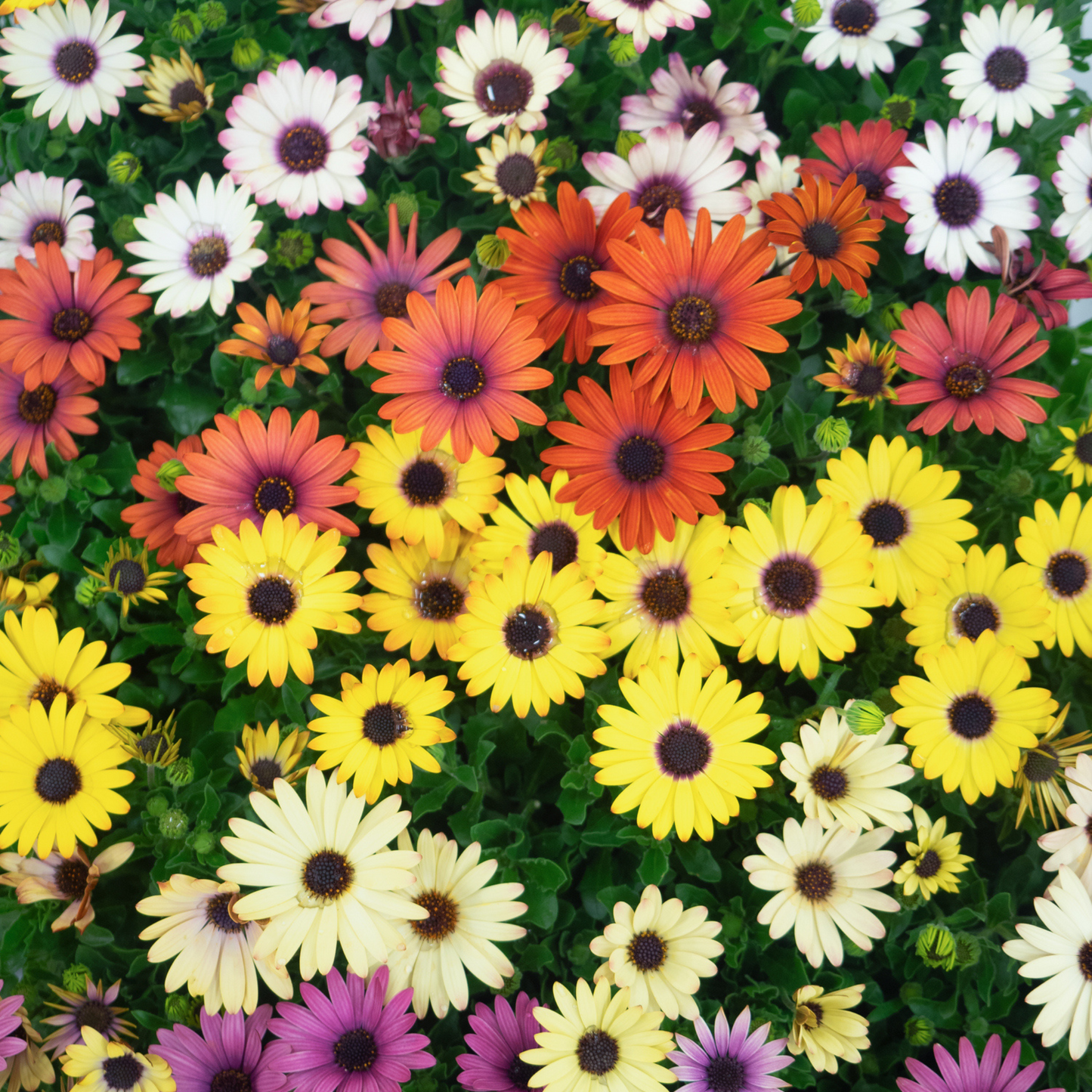Jonquil
African Daisy Aurantiaca Mix - 0.1 gram
African Daisy Aurantiaca Mix - 0.1 gram
Couldn't load pickup availability
African Daisy 'Aurantiaca Mix' (Osteospermum aurantiacum) is a stunning, easy-to-grow annual (or tender perennial in warmer climates) that produces vibrant, daisy-like flowers in a bold range of colours — including shades of orange, yellow, apricot, and salmon. The flowers have dark centers, creating a striking contrast, and the plant’s silvery-green foliage adds extra charm. These cheerful blooms open in full sun and often close at night or during cloudy weather.
Planting Time:
Sow seeds indoors 6–8 weeks before the last frost or directly in the garden after the danger of frost has passed.
In warm climates, you can also sow in autumn for spring blooms.
Location & Soil
Prefers a sunny spot — at least 6–8 hours of direct sunlight daily.
Grows best in well-drained, sandy, or loamy soil.
Tolerates poor soil but will not thrive in waterlogged areas.
Optimal soil pH: 6.0–7.0.
Sowing
Indoors: Plant seeds in seed trays about 0.5 cm deep. Keep moist until germination (usually within 7–14 days).
Outdoors: Sow seeds directly into the soil after frost, spacing them 20–30 cm apart.
Light aids germination, so don’t cover seeds too deeply.
Watering
Keep soil evenly moist during germination.
Once established, African daisies are drought-tolerant — water once a week or when the soil is completely dry.
Avoid overwatering — soggy soil can cause root rot.
Fertilizing
For continuous blooms, use a low-nitrogen fertilizer every 4–6 weeks.
Avoid overfeeding — too much nitrogen leads to lush leaves but fewer flowers.
Care
Deadhead spent flowers regularly to encourage more blooms.
If plants become leggy, pinch back stems to promote bushier growth.
Bloom Time
Blooms from late spring through summer, sometimes extending into early autumn.
In cooler weather, flowering slows, but they often perk up again with warm temperatures.
Companion Planting
Pairs well with marigolds, gazanias, and succulents.
Attracts pollinators like bees and butterflies while repelling certain pests.
Would you like help designing a drought-tolerant garden with these beauties, or tips on how to collect their seeds for next season?
Share


